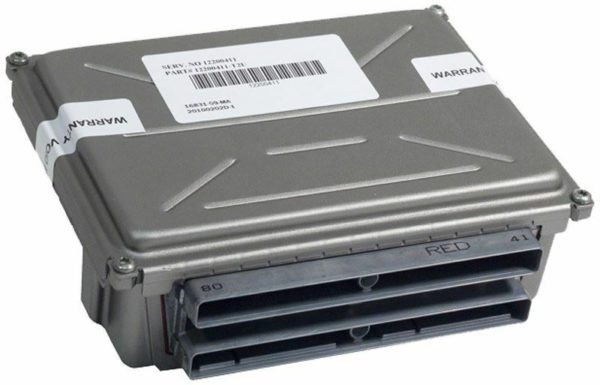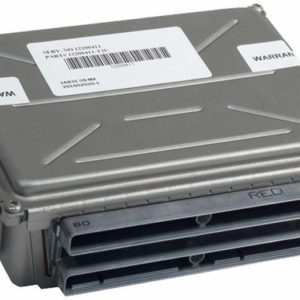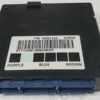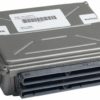Is Your GM Truck or SUV Acting Possessed? It Could Be the PCM.
You turn the key in your 2000 Yukon XL 2500, and it just cranks and cranks. Or maybe it starts, but it idles rough, shifts with a hard clunk, and the check engine light is on with a dozen codes that make no sense. You’ve replaced sensors, checked wiring, and you’re at your wit’s end. As a technician with over two decades of experience under the hood of these GM trucks, I’ve seen this exact scenario play out hundreds of times. The culprit is often the one component you can’t easily test: the Powertrain Control Module (PCM), the electronic brain of your vehicle.
What Exactly Does the PCM Do?
Think of the PCM (also called an ECM or Electronic Control Module) as the central command center for your engine and transmission. It takes in data from dozens of sensors—oxygen sensors, crank position, throttle position—and makes thousands of calculations per second to control fuel injection, spark timing, and transmission shift points. When it starts to fail, the signals it sends out become erratic, leading to a cascade of confusing and frustrating problems.
A Technician’s Real-World Story
“A customer’s 2000 Silverado 2500 came in on a tow truck last month with these exact symptoms. It had a no-start condition, and the owner had already replaced the fuel pump and crank sensor. His scanner couldn’t even communicate with the computer. We immediately suspected the PCM. On these trucks, they’re mounted under the battery, where they are exposed to heat, vibration, and the occasional leaking battery acid. We swapped in a pre-programmed PCM, performed the security relearn, and the truck fired right up and ran perfectly. It’s a classic failure point on this platform.”
Common Symptoms of a Failing GM PCM (Part #19109040)
If your vehicle is experiencing any of the following, a faulty PCM is a very likely cause. I’ve personally diagnosed these issues and traced them back to the module itself:
- ✔ Crank-but-no-start condition where fuel and spark are confirmed missing.
- ✔ The engine randomly stalls while driving or at a stop.
- ✔ Harsh, erratic, or delayed transmission shifting.
- ✔ Multiple, unrelated diagnostic trouble codes (DTCs) are present.
- ✔ Communication errors with your scan tool (e.g., U1000 codes).
- ✔ The anti-theft or security light stays on, preventing the engine from starting.
- ✔ Poor fuel economy and a noticeable loss of power.
- ✔ Check Engine Light is on, but replacing the indicated sensor doesn’t fix the problem.
The Solution: A Reliable, Plug-and-Play Module
Don’t waste time and money chasing phantom issues or pay dealership prices for programming. This Powertrain Control Module is the definitive solution. We take a high-quality, inspected core and flash it with the latest, most stable GM-certified software specific to YOUR vehicle. All you have to do is provide us with your Vehicle Identification Number (VIN) after purchase.
Why VIN-Specific Programming is Not Optional—It’s Essential
Your VIN isn’t just a serial number. It tells the PCM everything it needs to know: what engine you have (5.3L, 6.0L), your transmission type, axle ratio, tire size, and critical security information (VATS/Passlock system). Installing a non-programmed module is a guaranteed recipe for failure. It simply will not work. Our process ensures that when you receive your module, it’s ready for installation and communication with the other systems in your vehicle.
Installation and Post-Install Procedures
Installation is straightforward for a DIYer with basic tools. On most trucks and SUVs like the Yukon, Silverado, and Tahoe, the PCM is located under the battery tray on the driver’s side. On F-body cars like the Camaro and Firebird, it’s typically behind the passenger-side strut tower. Always disconnect the negative battery terminal before starting.
IMPORTANT: After installation, you will likely need to perform a Security Relearn Procedure (also known as a VATS relearn). This syncs the new PCM with your vehicle’s anti-theft system. It’s a simple procedure that typically involves turning the key to the ‘ON’ position for 10-15 minutes, then off, and repeating two more times. No special tools are required for this step. In some cases, a Crankshaft Variation (CASE) relearn may be needed with a capable scan tool to clear a P1336 code, but the vehicle will run and drive without it.
Guaranteed Compatibility
This module is a direct replacement for the following part numbers:
- ✔ 19109040
- ✔ 09354896
- ✔ 9354896
It is confirmed to fit the following vehicles:
- ✔ 1999-2000 Chevrolet Corvette
- ✔ 1999-2002 Pontiac Firebird (5.7L)
- ✔ 1999-2002 Chevrolet Camaro (5.7L)
- ✔ 1999-2000 GMC Sierra 1500/2500 Pickup
- ✔ 1999-2000 Chevrolet Silverado 1500/2500 Pickup
- ✔ 2000 Chevrolet Tahoe (Silverado Style)
- ✔ 2000 GMC Yukon & Yukon XL 1500/2500
- ✔ 2000 Chevrolet Suburban 1500/2500
Order today and get the brain of your vehicle back in perfect working order. Stop the guesswork and install the right part, programmed correctly, the first time.



